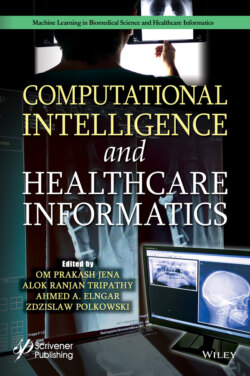Читать книгу Computational Intelligence and Healthcare Informatics - Группа авторов - Страница 41
2.2 Broad Overview of Research
ОглавлениеThough ample number of models has been implemented for localization and classification of thoracic pathologies, the broad view of research carried out till date (i.e., December 2020) is represented using Figure 2.1.
It is observed that researchers have either designed their own ensemble models using existing pretrained models or use pre-trained models like GoogleNet, AlexNet, ResNet, and DenseNet for localization of yCXR. In ensemble models, either weights of neural networks are trained on widely available ImageNet dataset or averaging outputs of existing models were used for building new models. Input to these models could be either radiography CXR images or radiologist report in text form. One of the most regular and cost-effective medical imaging tests available is chest x-ray exams. Chest x-ray clinical diagnosis is however more complex and difficult than chest CT imaging diagnosis. The lack of publicly accessible databases with annotations makes clinically valid computer-aided diagnosis of chest pathologies more difficult but not impossible. Therefore, annotation of CXR images is done manually by researchers and is made available publicly to test the accuracy of novel models. These datasets include ChestX-ray14, ChestX-ray8, Indiana, JSRT, and Shenzhen dataset. The final output of existing models is identifying one or more than one pathology out of fourteen located in either x-ray image or radiologist report. DL models devised by researchers are compared on the basis of various metric such as Receiver Operating Characteristic (ROC), Area Under Curve (AUC), and F1-score, which are listed in Figure 2.1. While designing deep learning models for detection of thoracic pathologies various challenges are faced by researchers which are discussed in next section.
